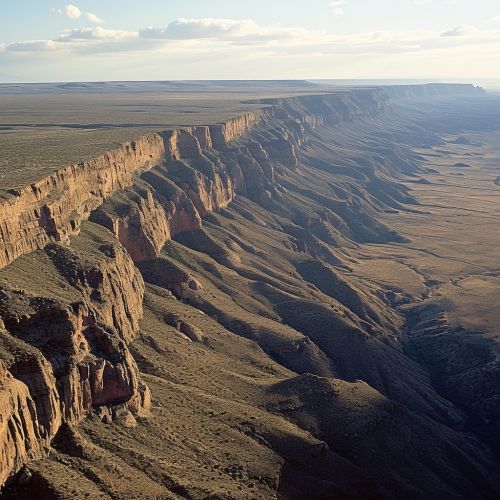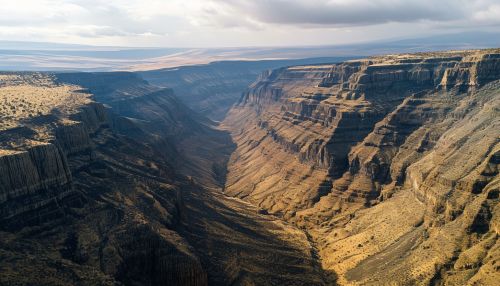East African Rift
Introduction
The East African Rift (EAR) is an active continental rift zone in East Africa. The EAR began developing around the onset of the Miocene, 22–25 million years ago. In the past, it was considered to be part of a larger Great Rift Valley that extended north to Asia Minor.
Geology


The East African Rift is unique among the continental rifts because it contains many active volcanoes. The rift is a narrow zone where the African Plate is in the process of splitting into two new tectonic plates, the Somali Plate and the Nubian Plate. This process is accompanied by surface manifestations along the rift valley in the form of volcanism and seismic activity. Rifts are the initial stage of a continental break-up and, if successful, can lead to the formation of a new ocean basin.
Geographical Extent
The East African Rift system is an extensive geological feature that crosses from the northern to the eastern part of Africa. It is a complex system that comprises two main branches. The Eastern Rift Valley (also known as the Great Rift Valley or Gregory Rift) extends from the Afar Triple Junction in the north to the northern part of Malawi in the south, and is approximately 6,400 km long. The Western Rift Valley, also known as the Albertine Rift, is a western branch of the East African Rift and extends from the northern end of Lake Albert to the southern end of Lake Tanganyika, covering a distance of 1,800 km.
Tectonic Activity
The East African Rift is one of the great tectonic features of Africa, caused by fracturing of the Earth's crust. This immense rift is the product of plate tectonics, specifically the movement of the Somali Plate away from the Nubian Plate. The process of rifting has been ongoing for millions of years and continues today. The rift is widening at a rate of a few millimeters per year. As the rift grows wider, large faults have developed, many of which are responsible for the high seismic activity in the region.
Volcanic Activity
The East African Rift is home to some of the world's most active volcanoes, including Mount Kilimanjaro, Mount Kenya, and Mount Nyiragongo. These volcanoes are not only a testament to the geologic activity of the region, but also contribute to the rich soil that supports a thriving ecosystem. The volcanic activity in the region is a result of magma rising to the surface as the African Plate splits apart.
Flora and Fauna
The East African Rift region is known for its high biodiversity. The rift's lakes and mountains have created a variety of habitats, which are home to a large number of endemic species. The Albertine Rift, the western branch of the East African Rift, has the highest number of endemic species of any region in Africa. This includes a variety of mammals, birds, reptiles, amphibians, and plants.
Human Settlement
The East African Rift has been a significant place for human evolution and migration. The region's rich resources, diverse habitats, and changing climate have played a key role in human history. Some of the earliest hominid fossils have been found in the East African Rift region, particularly in the Olduvai Gorge in Tanzania and the Lake Turkana region in Kenya.
Economic Importance
The East African Rift system has significant economic importance. It is a major source of mineral resources, including gold, copper, and precious stones. The rift's lakes are important for fishing, and its fertile soils support agriculture. The region's unique landscapes and biodiversity also make it a key area for tourism.
